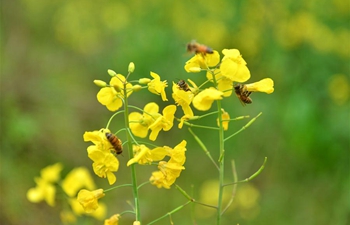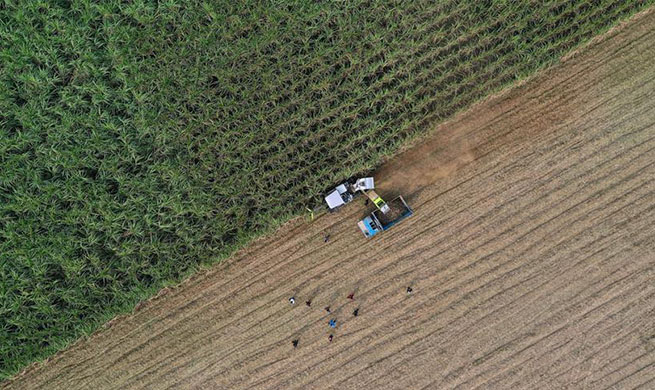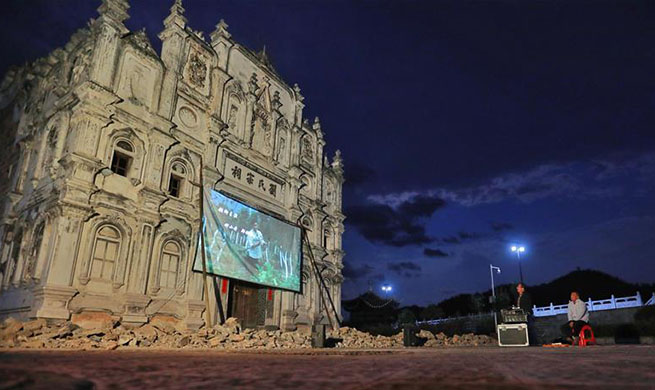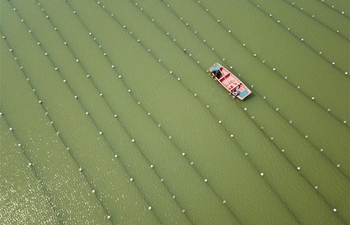WASHINGTON, March 19 (Xinhua) -- A spacecraft's close-up observation of the near-Earth asteroid Bennu showed particle plumes erupting from its more rugged surface, which may alter the spacecraft's flight and sample collection plans in the coming year, U.S. scientists said at a teleconference on Monday.
The United States space agency NASA's spacecraft OSIRIS-REx rendezvoused with an ancient asteroid Bennu in late December 2018 and started its observations to find a landing site so that the spacecraft would extend its sampling arm and touch the asteroid's surface to collect at least 60 grams of loose material in 2020.
The OSIRIS-REx team previously expected a generally smooth surface with a few large boulders on Bennu, but it turned out that Bennu's entire surface is rough and dense with boulders.
The rough surface means the touch-and-go sample collection plans had to be adjusted, according to NASA.
The original mission design was based on a sample site that is hazard-free, with a 25-meter radius, but scientists were not able to find a site of that size on Bennu.
Also, the camera on the spacecraft discovered particle plumes erupting from the Bennu surface. Although many of the particles were ejected clear of asteroid, some particles orbited Bennu as satellites before returning to the asteroid's surface, according to NASA.
After a safety assessment, the mission team concluded the particles did not pose a risk to the spacecraft.
"Bennu has issued us a challenge to deal with its rugged terrain, and we are confident that OSIRIS-REx is up to the task," said Rich Burns, the project manager of OSIRIS-REx at NASA's Goddard Space Flight Center.
"Throughout OSIRIS-REx's operations near Bennu, our spacecraft and operations team have demonstrated that we can achieve system performance that beats design requirements," said Burns.
The sample on Bennu is scientifically meaningful because the primitive asteroids like Bennu resemble what Earth looked like when life began, containing organic molecules, volatiles, and amino acids that may have been the precursors to life on Earth.
The three-month observation as the spacecraft rotated Bennu has already produced multiple discoveries. It detected the existence of water locked inside the clays, indicating that liquid water was present at some time on Bennu's parent body, a much larger asteroid.



















